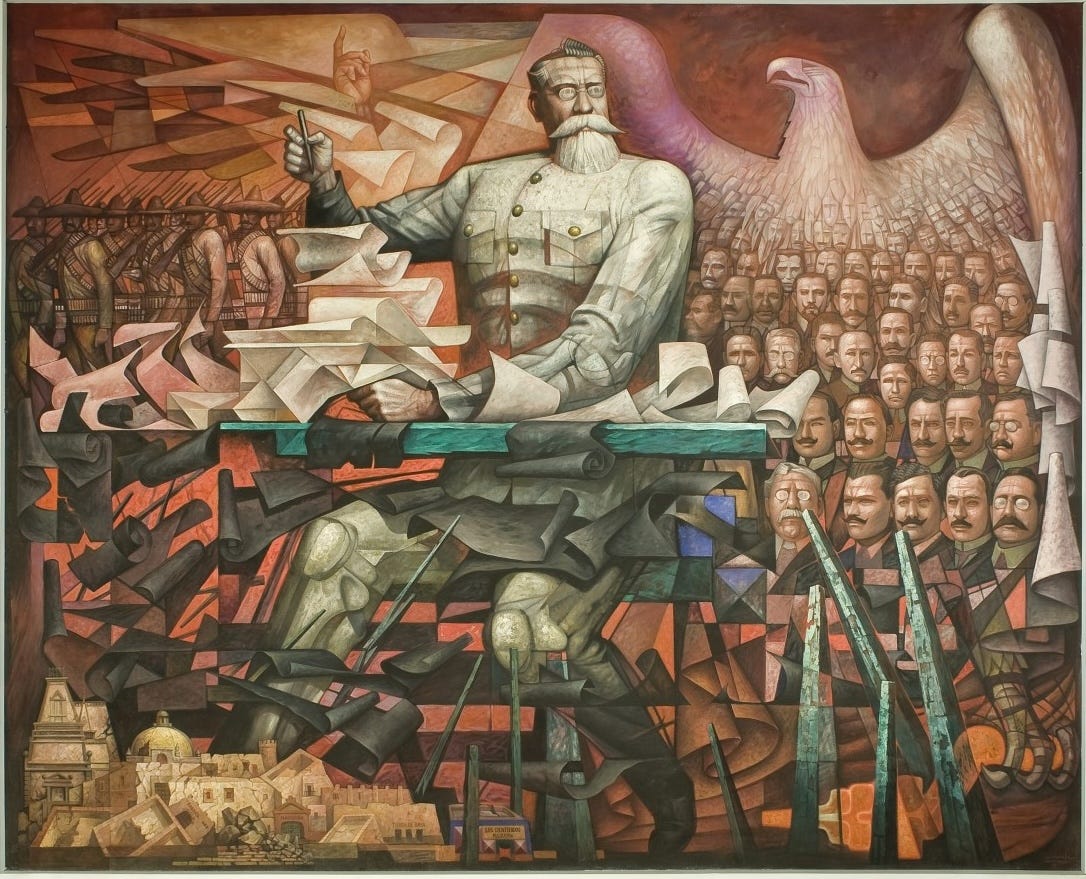Notes on a counter-reformation
A deep dive on judicial (and other) constitutional reforms
“Todo cambia, todo se transforma: todo sigue igual.”
-Carlos Monsivaís
Welcome to a deep dive edition of The Mexpatriate.
Before tackling constitutional reforms, an update: today’s newsletter is the first I have put (partially) behind a paywall. Starting today, free subscribers will have access to just two posts per month. If you do appreciate my work, please consider supporting it with a paid subscription. Thank you for reading and for sharing, always!
I have a confession. I’ve been avoiding tackling the most significant issue in Mexican politics today.
The judicial reform signed into law shortly before the end of AMLO’s presidency is the legislation that has launched a thousand op-eds; heralding the end (or the consolidation) of Mexico’s juvenile democracy.
The weekly tug-of-war between Mexico’s branches of government these days makes it hard to maintain a broader perspective—like trying to contemplate the ocean by staring into a tide pool.
This is why I’ve felt hesitant to add my voice to the chorus, assessing whether Morena’s array of constitutional reforms will send Mexico backward or catapult it into a brave new political era.
Nearly 50,000 candidates initially were reported to have registered for next year’s judicial elections, though that number has since dropped to around 18,000 after an initial review of the applications. They will run to fill 881 federal judiciary positions, including on the Supreme Court, in the June 1 elections.
Meanwhile, Morena has moved full steam ahead with the rest of its grab bag reform agenda in Congress—the Chamber of Deputies passed a constitutional ban on e-cigarettes and on illicit fentanyl last week, after voting to eliminate seven autonomous regulatory bodies (including the transparency, anti-trust and energy regulatory agencies) the week before.
In the news cycle, the past is only yesterday. The zeal of the reformers can appear reckless and destructive in this short-sighted view, but if we zoom out, the scene looks somewhat different. Is the scope of these reforms so radically different compared to previous constitutional reforms?
To answer this question, we need to step back to 1917.

The Revolution on paper
“Unlike what occurs in other democracies, constitutional reforms in Mexico are more the rule than the exception, with variations of pace and magnitude over time.”
-César Alejandro Giles Navarro
The Mexican Constitution of 1917 is one of the world’s most reformed Magna Cartas.
As of Dec. 2, it contains 136 articles and is over 400 pages long—and getting longer, as Morena and its congressional allies continue passing constitutional reforms at a brisk pace. The sexenio of President Enrique Peña Nieto (2012-2018) saw a record 155 modifications to the constitution, and López Obrador’s term (2018-2024) came in at 96. The most recent amendment to the U.S. Constitution was ratified in 1992; Mexico’s has been amended over 500 times since then.
Since September, Morena has capitalized on its strength at the federal and local legislative levels to ratify 12 constitutional reforms, ranging from the sweeping judicial reform to the “constitutional supremacy” law to placing the National Guard under the control of the Department of Defense. AMLO’s reform package is well on its way to constitutional status under President Claudia Sheinbaum, who can claim 19 modifications to the Constitution since she took office.
The media gasps about Morena having its way with the document, but tends to forget it already has a long history of modifications, repeals and additions.



